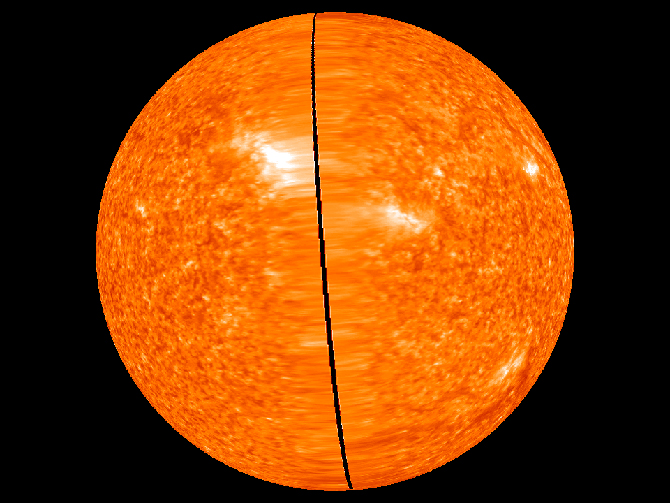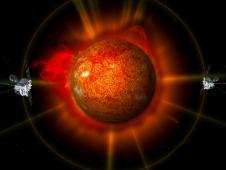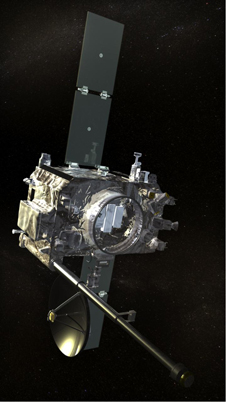
First Ever STEREO Images of the Entire Sun
First Ever STEREO
Images of the Entire Sun
(SCROLL DOWN)
*
*
*
*
*
*
*

Latest image of the far side of the Sun based on high resolution STEREO data, taken on February 2, 2011 at 23:56 UT when there was still a small gap between the STEREO Ahead and Behind data. This gap will start to close on February 6, 2011, when the spacecraft achieve 180 degree separation, and will completely close over the next several days. Credit: NASA
February 6, 2011: It's official: The sun is a sphere.
On Feb. 6th, NASA's twin STEREO probes moved into position on opposite sides of the sun, and they are now beaming back uninterrupted images of the entire star—front and back.
"For the first time ever, we can watch solar activity in its full 3-dimensional glory," says Angelos Vourlidas, a member of the STEREO science team at the Naval Research Lab in Washington, DC.
NASA released a 'first light' 3D movie on, naturally, Super Bowl Sunday:
"This is a big moment in solar physics," says Vourlidas. "STEREO has revealed the sun as it really is--a sphere of hot plasma and intricately woven magnetic fields."
Each STEREO probe photographs half of the star and beams the images to Earth. Researchers combine the two views to create a sphere. These aren't just regular pictures, however. STEREO's telescopes are tuned to four wavelengths of extreme ultraviolet radiation selected to trace key aspects of solar activity such as flares, tsunamis and magnetic filaments. Nothing escapes their attention.
An artist's concept of STEREO surrounding the sun. Credit: NASA "With data like these, we can fly around the sun to see what's happening over the horizon—without ever leaving our desks," says STEREO program scientist Lika Guhathakurta at NASA headquarters. "I expect great advances in theoretical solar physics and space weather forecasting."
Consider the following: In the past, an active sunspot could emerge on the far side of the sun completely hidden from Earth. Then, the sun's rotation could turn that region toward our planet, spitting flares and clouds of plasma, with little warning.
"Not anymore," says Bill Murtagh, a senior forecaster at NOAA's Space Weather Prediction Center in Boulder, Colorado. "Farside active regions can no longer take us by surprise. Thanks to STEREO, we know they're coming."
NOAA is already using 3D STEREO models of CMEs (billion-ton clouds of plasma ejected by the sun) to improve space weather forecasts for airlines, power companies, satellite operators, and other customers. The full sun view should improve those forecasts even more.
| › Download this and more STEREO 360 videos
Observing solar storms from two points of view has allowed forecasters to made 3D models of advancing coronal mass ejections (CMEs), improving predictions of Earth impacts. Credit: NOAA/SWPC |
The forecasting benefits aren't limited to Earth.
"With this nice global model, we can now track solar storms heading toward other planets, too," points out Guhathakurta. "This is important for NASA missions to Mercury, Mars, asteroids … you name it."
An artist's concept of STEREO spacecraft. Credit: NASA
Feb. 8, 2011
VIEW VIDEOS
http://www.nasa.gov/mission_pages/stereo/news/entire-sun.html


